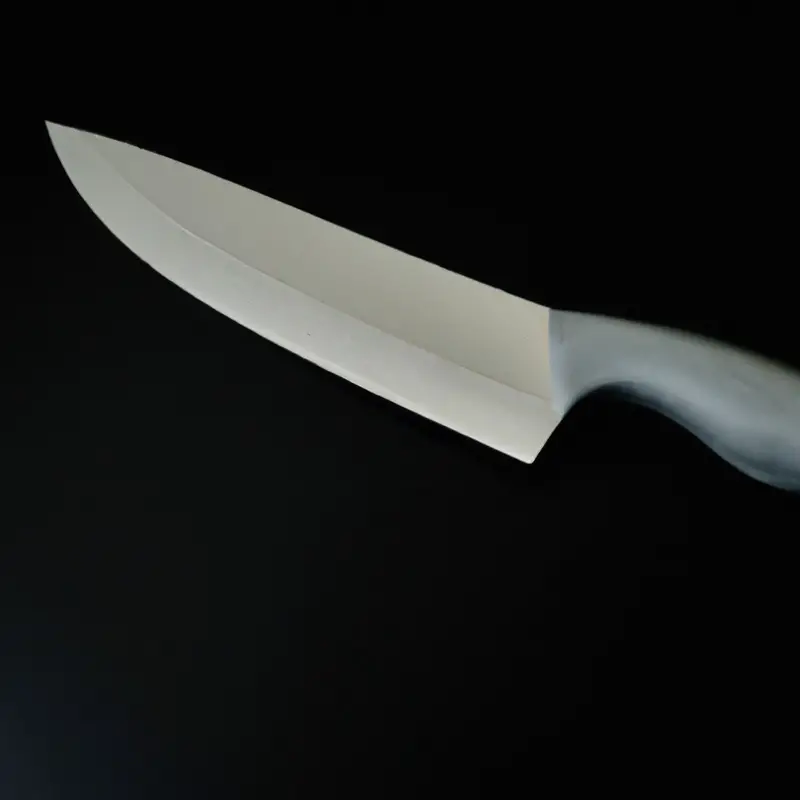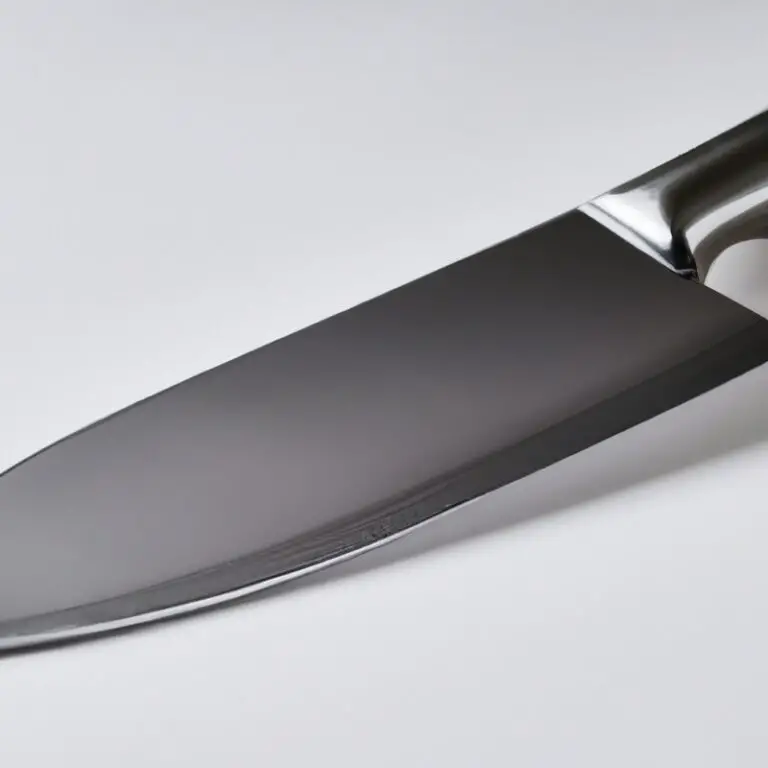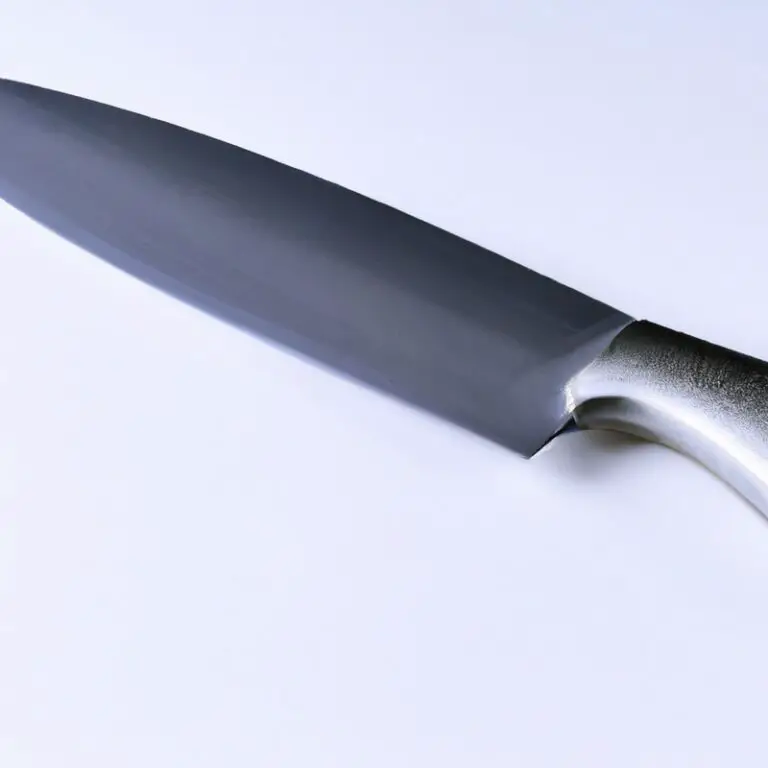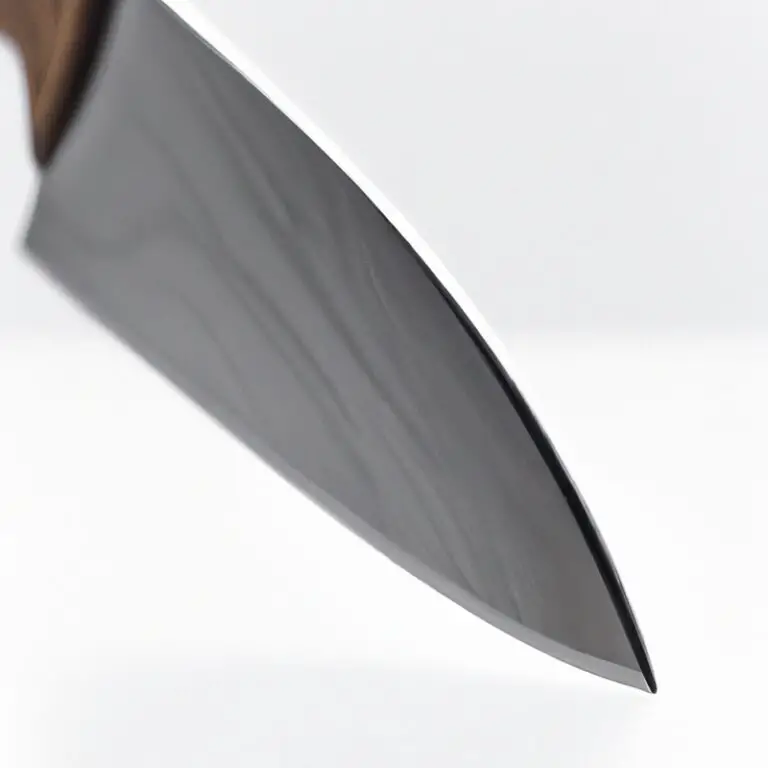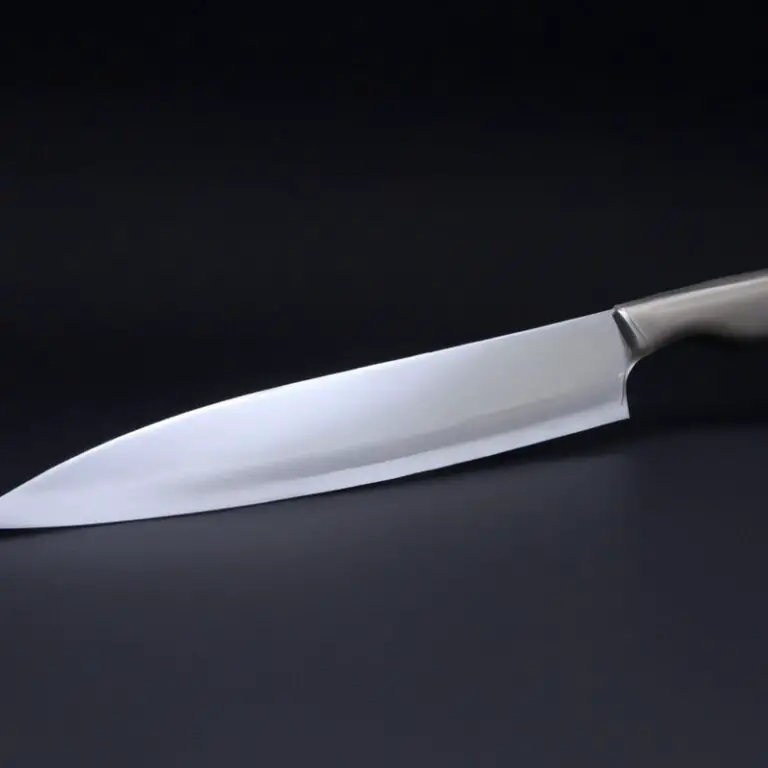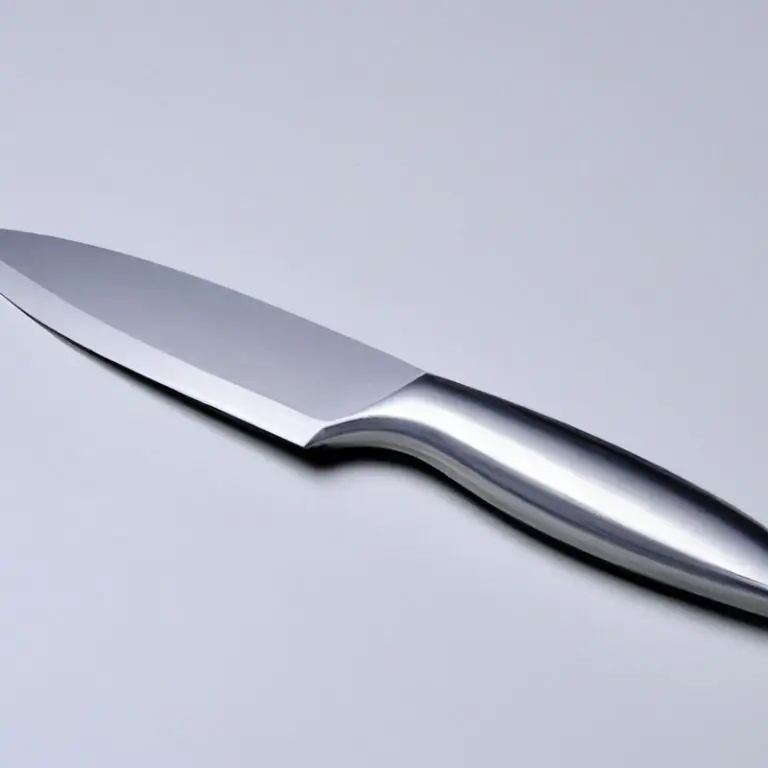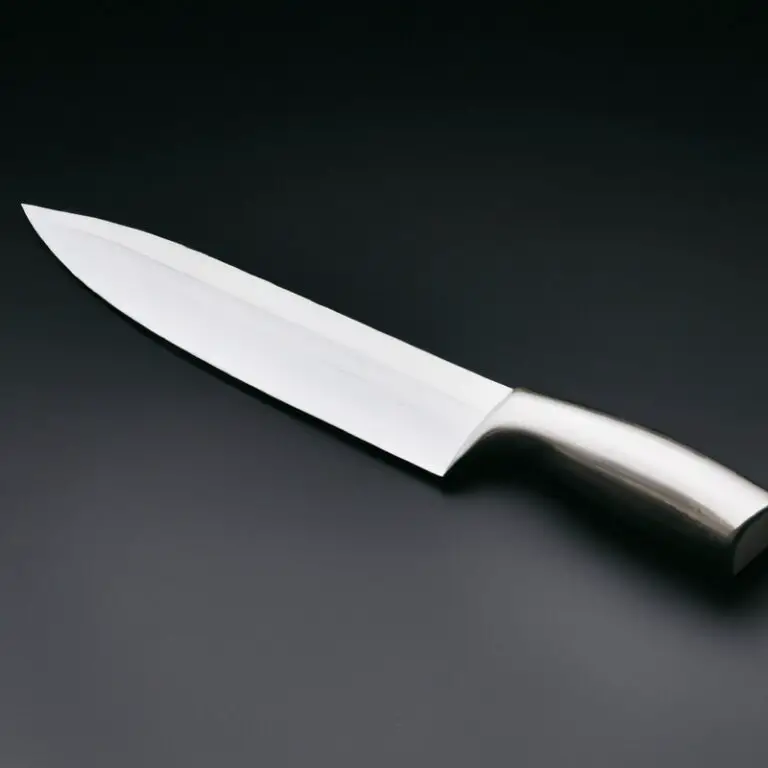Are Santoku Knives Suitable For Backpacking Trips? Cutlery Conundrum
Key Takeaways:
- Santoku knives are versatile and lightweight, making them a great option for backpackers who value efficiency and convenience.
- The flat blade of a Santoku knife is ideal for slicing and chopping, but may not be suitable for more specialized cutting tasks.
- When selecting a Santoku knife for backpacking, consider the blade length and material, as well as the handle grip and overall durability.
- As with any piece of equipment, it is important to take proper care of your Santoku knife to ensure its longevity and performance on future trips.
When it comes to backpacking trips, packing the right gear is essential for a successful and enjoyable adventure. And one item that should not be overlooked is a good knife.
But with so many options available, it can be overwhelming to decide which one is the right fit.
In this article, we will dive into the world of Santoku knives and explore whether they are suitable for backpacking trips. From the anatomy and history of the knife to the benefits, care, and uses on the trail, we’ve got you covered.
So, let’s get cooking!
| Santoku knife features | Backpacking suitability |
|---|---|
| Shorter blade length (5-7 inches) | ✓ Ideal for packing and carrying |
| Lightweight design | ✓ Easy to carry in a backpack |
| Multipurpose blade (flat edge, curved tip) | ✓ Can handle various cutting tasks |
| Not suitable for heavy-duty tasks | ✕ Limited for tougher cutting needs |
| May require sharpening more often | ✓ Easy to sharpen while on the go |
Anatomy of a Santoku Knife: Understanding the Blade and Handle
The anatomy of a Santoku knife consists of two essential parts: the blade and the handle. Santoku blades are shorter and wider than traditional Western knives, usually measuring between 5-7 inches in length.
The blade’s design combines both a flat and a curved edge, ideal for chopping and slicing meats, vegetables, and fruits.
The blade’s shape prevents food from sticking to the side, making it easier to cut and prepare. The handle’s design on a Santoku knife is typically shorter, lighter, and thinner than Western knives.
The handle’s smaller size doesn’t compromise comfort or safety; instead, it offers better control and enhances the user’s chopping experience.
It accommodates both right and left-handed users, and the smooth grip design ensures a secure and comfortable grip throughout the cutting process. Understanding the anatomy of a Santoku knife is crucial for proper usage, hygiene, and maintenance.
The blade and handle’s design contribute to the efficiency and accuracy of the cutting process.
A well-designed handle provides excellent grip, control, and comfort, while the correct blade type ensures a clean and effortless cut. Keep in mind that not all Santoku knives are the same, and blade quality and durability depend mainly on the manufacturer.
It’s essential to research reputable brands and invest in a high-quality Santoku knife that will suit your backpacking needs and help you prepare delicious meals on the trail.
The History of Santoku Knives: Tradition Meets Modernity
Santoku knives, often referred to as the “three virtues” knife, originated in Japan during the mid-twentieth century. The name santoku translates to “three virtues” in Japanese, signifying the knife’s versatility in cutting fish, meat, and vegetables.
Traditionally, santoku knives had a wooden handle and a blade made of high-carbon steel.
However, modern variations feature materials such as stainless steel and non-slip synthetic handles for improved durability and grip. Despite this modernization, the essence of the santoku knife’s design remains true to its traditional origins.
The blade’s unique shape, with a blunt tip and a flat edge, allows for precise cuts and chopping.
Today, santoku knives have grown in popularity around the world and are a staple in both home and professional kitchens.
Lightweight Wonders: Santoku Knives for Backpacking Trips
Santoku knives are an excellent option for backpacking trips. They are lightweight, compact, and versatile, making them ideal for outdoor cooking.
Santoku knives are designed to perform a variety of tasks, from chopping vegetables to slicing meat, making them a valuable tool to have on the trail.
Their thin and sharp blades make it easy to prepare food quickly and efficiently, saving time and energy. Additionally, their ergonomic design and comfortable handles make them easy to use for extended periods.
When choosing a Santoku knife for backpacking, look for a lightweight and durable option that can withstand the rigors of the trail.
With proper care, a Santoku knife can be a reliable and long-lasting companion on any backpacking trip.
Benefits of Using Santoku Knives for Backpacking Trips
Benefits of Using Santoku Knives for Backpacking Trips
- Lightweight: Santoku knives offer a lightweight solution for backpackers to carry on their trips, reducing the load on their backs.
- Versatile: The flat blade of Santoku knives is suitable for a variety of tasks, including chopping, slicing, and dicing.
- Easy to Use: The design of Santoku knives allows for a comfortable grip and easy handling, even when working with tough or slippery foods.
- Efficient: The sharp blade of a Santoku knife cuts through ingredients with minimal effort, making it a fast and efficient tool for preparing meals on the trail.
- Durable: Santoku knives are made from high-quality materials that can withstand the wear and tear of backpacking trips and remain sharp throughout the journey.
- Safe: The compact size of a Santoku knife makes it easy to pack and store safely, reducing the risk of accidents while hiking or camping.
- Eco-Friendly: Using a Santoku knife instead of disposable utensils reduces waste and supports sustainable practices during backpacking trips.
Choosing the Right Santoku Knife for Your Backpacking Trip
When it comes to choosing the right Santoku knife for your backpacking trip, there are a few key factors to consider. First and foremost, look for a knife with a lightweight and compact design that won’t weigh down your pack.
A blade length of 5-7 inches is ideal for versatile chopping, slicing, and dicing.
Next, consider the materials used in the construction of the knife. High-quality stainless steel is a great option for its durability and resistance to corrosion, while carbon steel offers a sharper edge but requires extra care to prevent rusting.
A comfortable and ergonomic handle is also important for extended use on the trail.
Look for a knife with a non-slip grip and a balanced weight distribution for optimal control. Finally, consider your budget.
While it’s tempting to invest in a top-of-the-line knife, there are plenty of affordable options that still provide excellent performance for backpacking trips.
Overall, when choosing a Santoku knife for your backpacking trip, prioritize lightweight design, blade length and material, comfortable handle, and budget. By finding the right knife for your needs, you’ll be able to enjoy convenient and efficient meal preparation on the trail.
Preparing Food on the Trail with a Santoku Knife
Preparing food on the trail with a Santoku knife is a breeze. The sharp and versatile blade of a Santoku knife makes slicing and dicing vegetables, fruits, and meats a smooth process.
One key tip for preparing food on the trail is to choose lightweight ingredients that are easy to pack and prepare.
Packaged dehydrated meals or freeze-dried food are popular among backpackers. However, if you prefer to cook your meals from scratch, a Santoku knife can come in handy.
It is essential to keep safety in mind while using a Santoku knife on the trail.
Use a stable surface to slice and chop, and be sure to grip the handle firmly. Always cut away from your body and keep your fingers away from the blade.
After use, clean the Santoku knife with soap and water and dry it thoroughly.
Store the knife in a protective sheath to safeguard it from damage and keep it secure. Overall, using a Santoku knife for preparing food on the trail is an effective and efficient way to enjoy delicious meals while exploring the great outdoors.
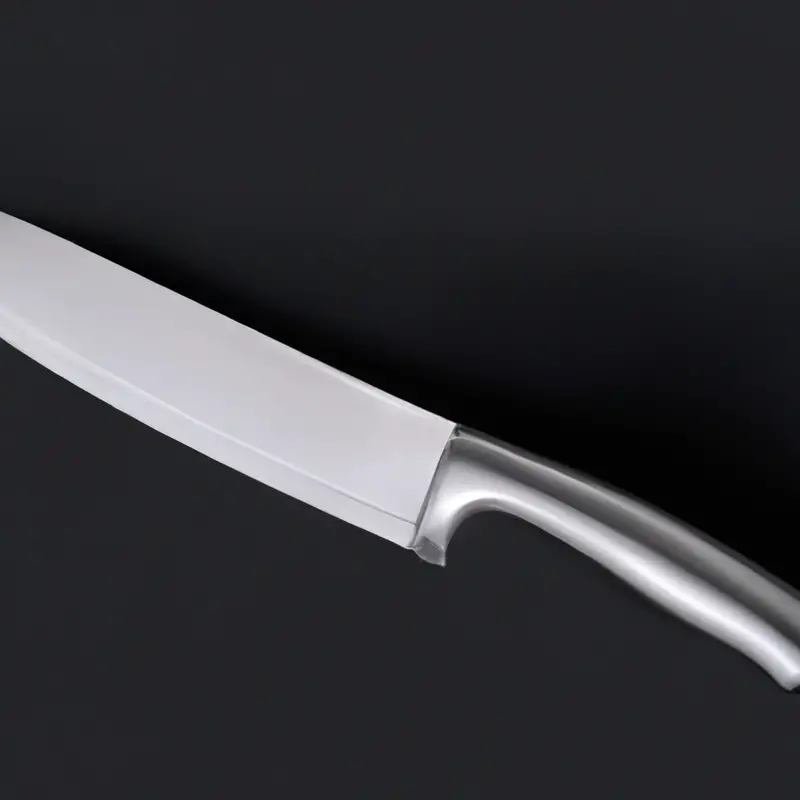
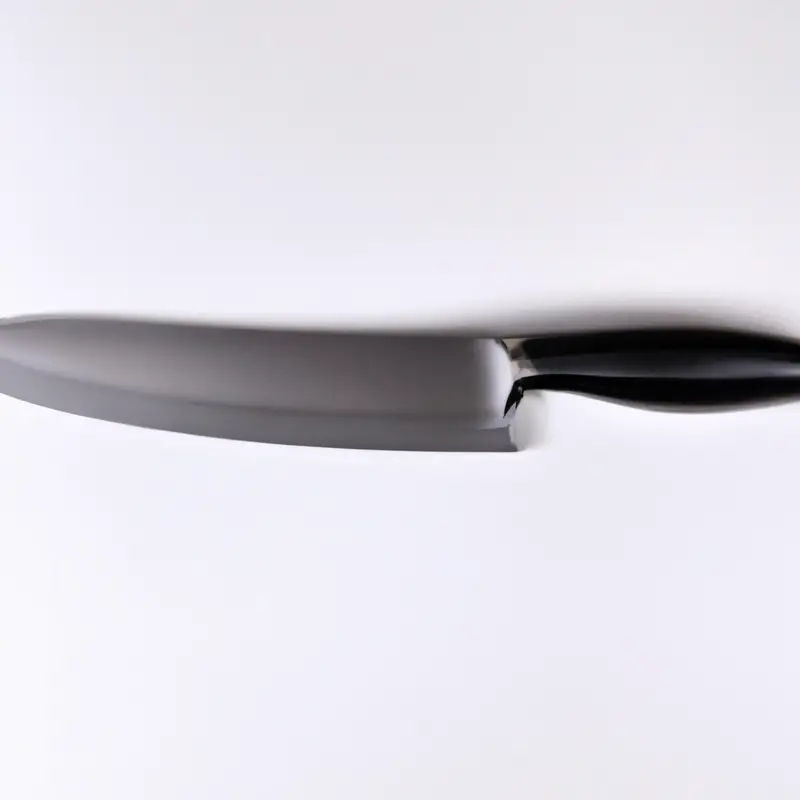
Santoku Knife Care on Backpacking Trips: Keeping Your Blade Sharp
When taking a Santoku knife on a backpacking trip, it’s essential to keep the blade sharp to ensure safe and efficient cutting. Here are a few tips to keep your Santoku knife in top condition:
- Bring a sharpening stone or steel: You can maintain the sharpness of your blade by using a sharpening stone or steel, which you can easily carry in your backpack.
- Keep the blade clean and dry: After each use, wipe the blade with a damp cloth and dry it with a towel to remove any moisture and prevent rust from forming.
- Avoid cutting on hard surfaces: Cutting on hard surfaces, such as rocks or metal, can dull or damage the blade. Instead, use a cutting board or other soft surfaces like wood or plastic.
- Store the knife properly: When not in use, store the Santoku knife in a sheath or blade guard to protect the blade from damage or accidental cuts.
By following these simple steps, you can ensure the longevity of your Santoku knife and keep it sharp for all your backpacking culinary needs.
Using a Santoku Knife for Multiple Purposes on the Trail
A Santoku knife is a versatile tool that can be used for various tasks during backpacking trips. It can be used to prepare meals, cut through tough meat and vegetables, and even shave wood for campfires.
The wide blade can also be used as a spatula to flip food while cooking.
With its lightweight design, a Santoku knife allows users to carry less weight, making it an ideal choice for backpacking trips. Its multiple uses also mean that backpackers can pack fewer tools, saving space in their backpacks.
When using a Santoku knife on the trail, it’s important to practice safety measures and handle the blade with care to avoid injuries.
Always use a cutting board or stable surface to avoid accidentally cutting yourself or damaging the blade. Overall, a Santoku knife is an excellent choice for backpacking trips due to its versatility and lightweight design.
Packing Your Santoku Knife Safely for Your Backpacking Trip
When packing your Santoku knife for a backpacking trip, it’s important to prioritize safety. Here are some tips for packing your knife safely:
- Use a sheath or blade guard to protect the blade.
- Wrap the handle with a cloth or paper towel to prevent damage during transport.
- Place the knife in a secure, padded container or wrap it in clothing to prevent it from moving around and potentially injuring you or damaging other items in your backpack.
- Keep the knife separate from food items to prevent cross-contamination.
- When packing your backpack, consider carrying the knife in an easily accessible spot, such as a hip pocket or outer pocket, to avoid fumbling around for it in a cramped space.
By following these guidelines, you can safely bring your Santoku knife on your backpacking trip and ensure that it remains in good condition.
Santoku Knife vs. Other Backpacking Knives: A Comparison Guide
When it comes to choosing a knife for your backpacking trip, there are many options available. The Santoku knife is a versatile and lightweight option that is well-suited for backpacking.
Compared to other knives, the Santoku’s blade is wider and shorter, making it easier to control and providing more surface area for chopping.
Additionally, the Granton edge, commonly found on Santoku knives, creates air pockets between the food and the blade, reducing friction and preventing food from sticking to the blade. Other backpacking knives, such as chef’s knives, hunting knives, or folding knives, may have their advantages, but they are generally heavier and less suited for food preparation.
For example, a hunting knife may be ideal for skinning and gutting meat, but it may not be as effective for slicing vegetables or chopping herbs.
The key advantage of the Santoku knife is its versatility. It can be used for slicing meats, chopping vegetables, and mincing herbs, making it an all-purpose knife for backpacking trips.
Plus, its lightweight and compact design make it easy to pack and carry.
Overall, the Santoku knife is a great option for backpacking trips, especially for food preparation. Its wide blade, Granton edge, and versatility make it an excellent choice for any outdoor adventure.
Sustainable Practices: Using a Santoku Knife for Eco-Friendly Backpacking
Using a Santoku knife for backpacking trips is not only practical but also sustainable. Santoku knives are designed to be efficient and versatile, which means that you can use the same knife for multiple purposes on the trail.
By doing so, you can avoid having to bring extra knives or disposable utensils, reducing waste and your overall impact on the environment.
Moreover, using a Santoku knife can help you prepare natural, healthy meals on your backpacking trips. With its sharp blade, you can easily slice through fruits, vegetables, and other ingredients without damaging them.
You can also use the knife to fillet fish or trim meat if you’re planning to add some protein to your meals.
By using a Santoku knife, you can stay away from processed and packaged foods commonly found in many outdoor stores, thereby minimizing waste and reducing your carbon footprint. Finally, one of the best things about using a Santoku knife for backpacking is that it’s easy to clean and maintain.
You can simply wipe the blade and handle clean with a damp cloth or rinse them off with a bit of water and soap.
Unlike disposable utensils or poorly made knives, a Santoku knife is built to last, meaning you won’t have to purchase a new one for future trips. By investing in a reliable and eco-friendly tool, you can ensure that your impact on the environment is minimal while still being able to enjoy the wilderness.
Enhancing Your Cooking Experience on a Backpacking Trip with a Santoku Knife
A Santoku knife can greatly enhance your cooking experience on a backpacking trip. Its unique design allows for efficient cutting, chopping, and mincing of various ingredients.
The sharp and ergonomic blade reduces the risk of injuries while preparing meals outdoors.
Additionally, a Santoku knife’s lightweight and compact size make it a great tool to carry on a backpacking trip. With the right Santoku knife, you can easily prepare meals and create culinary masterpieces even while on the trail.
Final Verdict
Santoku knives are a versatile and lightweight option for backpackers who want to prepare healthy and delicious meals on the trail. Understanding the anatomy of the blade and handle, the history of the knife, and the benefits of using it can help you choose the right one for your backpacking trip.
Proper care and packing can keep your knife sharp and safe for multiple purposes, from slicing vegetables to carving meat.
By using a Santoku knife for eco-friendly backpacking and enhancing your cooking experience, you can elevate your outdoor adventure and leave no trace behind. Trust in the reliability and expertise presented in this article and add a Santoku knife to your packing list for your next backpacking trip.

